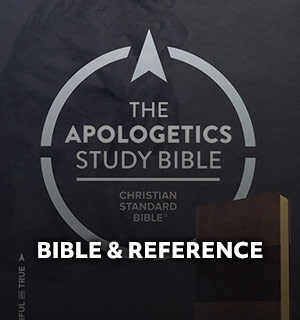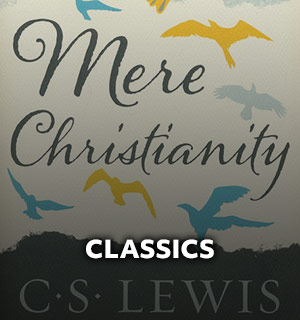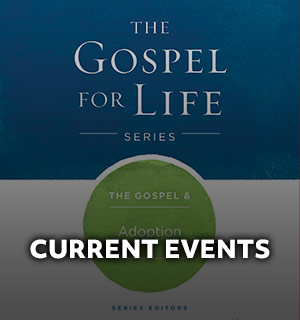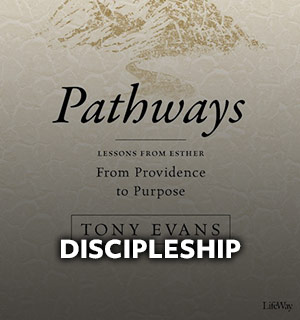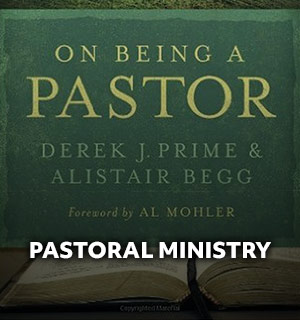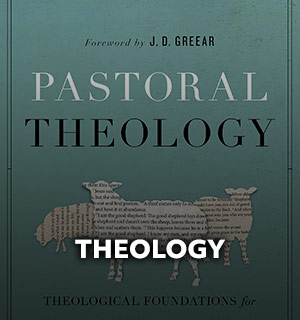Our conversation with David Allen, Tom Schreiner, and Trevin Wax
The Christian Standard Bible (CSB) is a revision of the Holman Christian Standard Bible (HCSB), first published in 2004. It has been recently updated to reflect advances in biblical scholarship and to meet the needs of churches around the world.
Facts & Trends talked to David Allen and Tom Schreiner, who co-chaired the translation oversight committee, as well as Trevin Wax, Lifeway’s Bible and Reference publisher, about the revision and what sets the CSB apart from other translations.
 |
 |
 |
What was the goal in updating the HCSB?
TREVIN WAX: To put it simply, we want more people reading the Bible. Research shows that while people may own a Bible, they aren’t necessarily reading it.
The top reason people give for not reading the Bible is not having enough time. A close second is frustration with understanding the Bible.
While we can’t add more hours to the day, we can offer a Bible translation that’s easy to understand. The CSB offers the high level of accuracy people expect from their Bible translation as well as the easy-to-read, modern English they desire.
We hope the CSB will inspire people to read the Bible, as well as to live out what it says and share it with others.
What is the translation philosophy of the CSB? And how does it differ from other translations?
TOM SCHREINER: Bible translations fit into a couple of categories. A formal equivalence translation takes a word-for-word approach—for each word in the original text, the translators have chosen an equivalent English word.
The King James Version would fit into this category.
Other translations would fit into the dynamic equivalence—or thought-for-thought—category. Rather than translating word for word from the original text, translators strive to stay close to the literal meaning of the text while also trying to capture the thoughts of the original authors in a way that’s meaningful to a modern audience.
The NIV and NLT would be considered dynamic equivalence translations.
The CSB was created using optimal equivalence, a translation philosophy (see chart below) that balances linguistic precision to the original languages and readability in contemporary English.
In the many places throughout Scripture where a word-for-word rendering is clearly understandable, a more literal, word-for-word translation is used in the CSB.
When a word-for-word rendering might obscure the meaning for a modern audience, a thought-for-thought translation is used. This process assures that both the words and thoughts contained in the original text are conveyed as accurately as possible for today’s readers.
The CSB provides a highly accurate text for sermon preparation and serious study, translated from the biblical languages by scholars who love God’s Word.
Yet it doesn’t compromise readability or clarity for readers who are less familiar with traditional (and sometimes difficult) vocabulary retained in some translations.
How is the CSB unique to other translations? How does it compare to others?
SCHREINER: Research shows the CSB provides the best balance of linguistic precision to original languages and readability in contemporary English.
Of course, individual passages vary, but here is an example of how the CSB compares to the New International Version (NIV), the English Standard Version (ESV), the New Living Translation (NLT), and the Common English Bible (CEB).
In Revelation 3:20, “See!” is an exclamation that calls attention to a situation. Since the second sentence is introduced with “anyone,” the word “him” that follows is clearly inclusive, and it is not necessary to use “they” or “you.”
- CSB: See! I stand at the door and knock. If anyone hears my voice and opens the door, I will come in to him and eat with him, and he with me.
- NIV: Here I am! I stand at the door and knock. If anyone hears my voice and opens the door, I will come in and eat with that person, and they with me.
- ESV: Behold, I stand at the door and knock. If anyone hears my voice and opens the door, I will come in to him and eat with him, and he with me.
- NLT: Look! I stand at the door and knock. If you hear my voice and open the door, I will come in, and we will share a meal together as friends.
- CEB: Look! I’m standing at the door and knocking. If any hear my voice and open the door, I will come in to be with them, and will have dinner with them, and they will have dinner with me.
Why was it important that the CSB be both highly literal to the original languages and highly readable?
DAVID ALLEN: The Bible is God’s revelation to humanity. But the Bible wasn’t written in English, so translation is necessary to bring God’s Word from the ancient languages (Hebrew, Greek, and Aramaic) into today’s world.
As Bible translators, we seek to give English readers a text that clearly communicates both the form and the meaning of the original languages as faithfully as possible.
But if we deliver a highly literal text that doesn’t communicate to today’s reader, we’ve done only half of our job.
A good translation must also be clearly understood—this is true of any book or document translated from one language to another, of course, but it must be especially true of a translation of God’s Word!
What makes the Christian Standard Bible good for Bible study or for use as a preaching text?
SCHREINER: The CSB is a highly accurate preaching text, translated from the best available Hebrew, Greek, and Aramaic source texts into English by biblical scholars who affirm the authority of Scripture as the inerrant Word of God; its source texts are the standard used by scholars and seminaries today.
The text is not only highly accurate but also remarkably clear; the CSB has been proven to optimize both accuracy and readability, making it accessible for your church members to also read on their own and to share with others.
How does a pastor choose a translation and what does a pastor wrestle with in making that decision?
ALLEN: Many pastors use a highly literal translation for sermon preparation, in addition to work they may do in the original languages.
But solid biblical teaching must be accompanied by regular Bible reading, which is the number one contributor to spiritual growth.
Research shows that many Bible readers feel frustrated because the Bible is often difficult to understand. So pastors may recommend a more readable translation to their church members for personal reading and study, for children and students, and for those who are new readers of the Bible.
We took this to heart as we worked on the Christian Standard Bible. Our aim is for the CSB to be faithful to the original text yet easy to read and understand, encouraging readers to spend more time in Scripture.
Is there value in the pastor and congregation using the same translation?
ALLEN: Many good translations of the Bible are available, and the use of two or three can enrich your personal study.
Yet when a pastor is preaching from the same Bible translation that church members are reading, studying, and memorizing personally, in small groups, and with their families, the focus can be on deeper understanding and application of the truths of the Bible, without the distractions of differing word order and word choices.
Because the Christian Standard Bible provides a text that’s highly literal and highly readable, it’s an ideal choice for both pastor and congregation.




